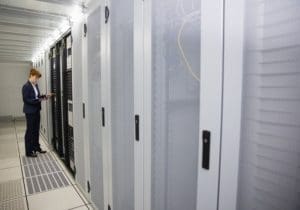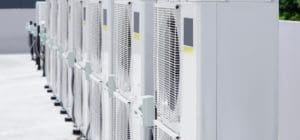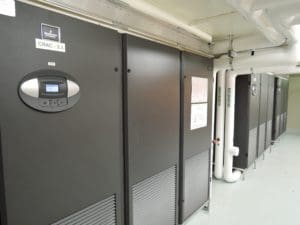Data centre monitoring is crucial for maximising the efficiency and performance of your infrastructure. At EziBlank, we provide innovative solutions designed to enhance oversight and optimise energy consumption within your facility. Our state-of-the-art monitoring systems not only help you track performance in real-time but also empower you to make data-driven decisions that drive down costs and elevate your operational capabilities. With easy installation and exceptional reliability, EziBlank’s products ensure that you're not just managing your data centre, but setting it up for long-term success. Join us in revolutionising your operations today!
How to Maintain Your Data Center
Maintaining a data centre is crucial for ensuring its reliability, efficiency, and longevity. Regular maintenance involves several key practices, starting with routine inspections of power and cooling systems to prevent potential failures and optimise performance. Ensuring that all equipment, including servers and networking devices, is updated with the latest firmware and software patches is essential for security and functionality. Effective cable management and the use of blanking panels help maintain proper airflow, which is critical for cooling efficiency. Additionally, conducting regular backups and testing disaster recovery plans ensure that data is protected against unexpected events. By adhering to these maintenance practices, a data centre can operate smoothly, reduce downtime, and extend the lifespan of its infrastructure.
Read More
How to Reduce Energy Consumption in a Data Center
Reducing energy consumption in a data centre is essential for cutting operational costs and promoting sustainability. One of the most effective strategies involves optimising airflow management by using blanking panels to block unused rack spaces, which prevents hot air recirculation and ensures that cool air is directed where it’s needed. Implementing hot and cold aisle containment systems further enhances cooling efficiency by separating hot and cold air streams, reducing the energy required for cooling. Upgrading to energy-efficient hardware, such as low-power servers and storage devices, can also significantly lower energy consumption. Additionally, adopting advanced cooling technologies like liquid cooling or free cooling can drastically reduce the reliance on traditional air conditioning. Regular monitoring and analysis of power usage effectiveness (PUE) allow data centre managers to identify inefficiencies and make real-time adjustments to optimise energy use. These measures, when combined, can lead to substantial energy savings, lower operating costs, and a reduced environmental impact for the data centre.
Read More
Best Practice Guide for an Energy Efficient Data Center
Creating an energy-efficient data centre involves implementing best practices that optimise performance while minimising energy consumption. Key strategies include effective airflow management, such as using blanking panels and hot/cold aisle containment to prevent the mixing of hot and cold air, thus reducing the load on cooling systems. Upgrading to energy-efficient hardware and utilising advanced cooling technologies like liquid or free cooling can significantly lower energy use. Regular monitoring and optimisation of power usage effectiveness (PUE) are also crucial, allowing for real-time adjustments that enhance efficiency. These practices not only reduce operational costs but also contribute to a more sustainable and environmentally friendly data centre.
Read More
Profiling your data centre for greater efficiency
Profiling your data centre is a crucial process for understanding its current performance, identifying inefficiencies, and planning for future improvements. This involves a comprehensive analysis of various aspects of the data centre, including power usage, cooling effectiveness, airflow management, and overall infrastructure performance. By profiling, data centre managers can pinpoint areas where energy is being wasted, such as hot spots caused by poor airflow or overcooling. Tools like temperature sensors, power meters, and monitoring software are often used to collect data that provides insights into how well the data centre is operating. With this information, targeted strategies can be implemented, such as optimising airflow with blanking panels or adjusting cooling systems, to enhance energy efficiency, reduce costs, and improve the reliability and lifespan of the equipment. Profiling is an essential step in ensuring that a data centre operates at peak efficiency and is prepared to meet future demands.
Read More
Higher efficiency is the new energy standard for data centre
Higher efficiency has become the new energy standard for data centres as organisations increasingly prioritise sustainability and cost-effectiveness in their operations. Achieving this standard involves adopting advanced technologies and best practices that significantly reduce energy consumption without compromising performance. Key strategies include optimising airflow management with solutions like blanking panels and hot/cold aisle containment, which prevent the mixing of hot and cold air, thereby improving cooling efficiency. Upgrading to energy-efficient hardware and implementing advanced cooling techniques, such as liquid cooling, also contribute to reducing power usage. Additionally, real-time monitoring of energy metrics, such as Power Usage Effectiveness (PUE), allows data centre managers to make informed decisions and continually refine their operations. Embracing these practices not only helps data centres lower their operational costs but also aligns them with global sustainability goals, making higher efficiency the new benchmark in the industry.
Read More
